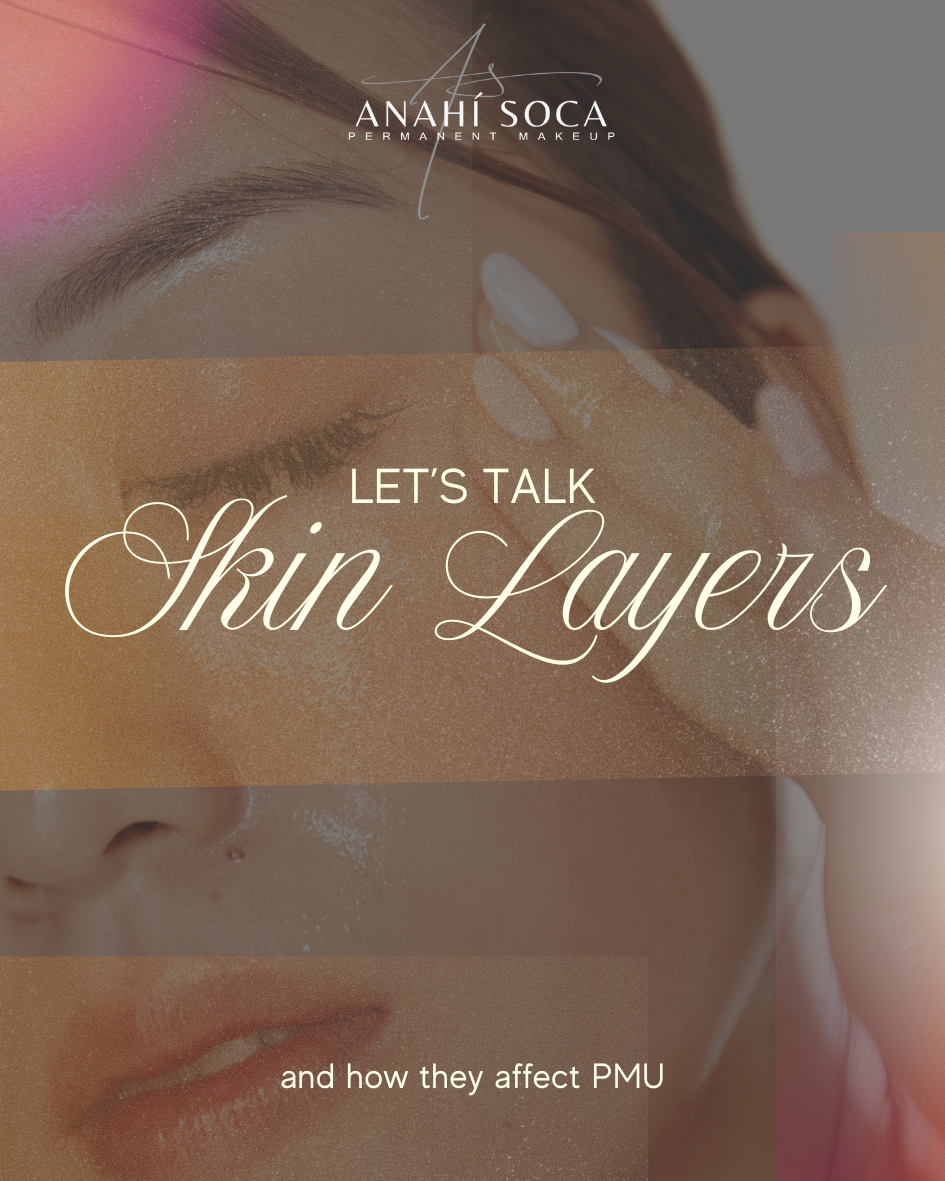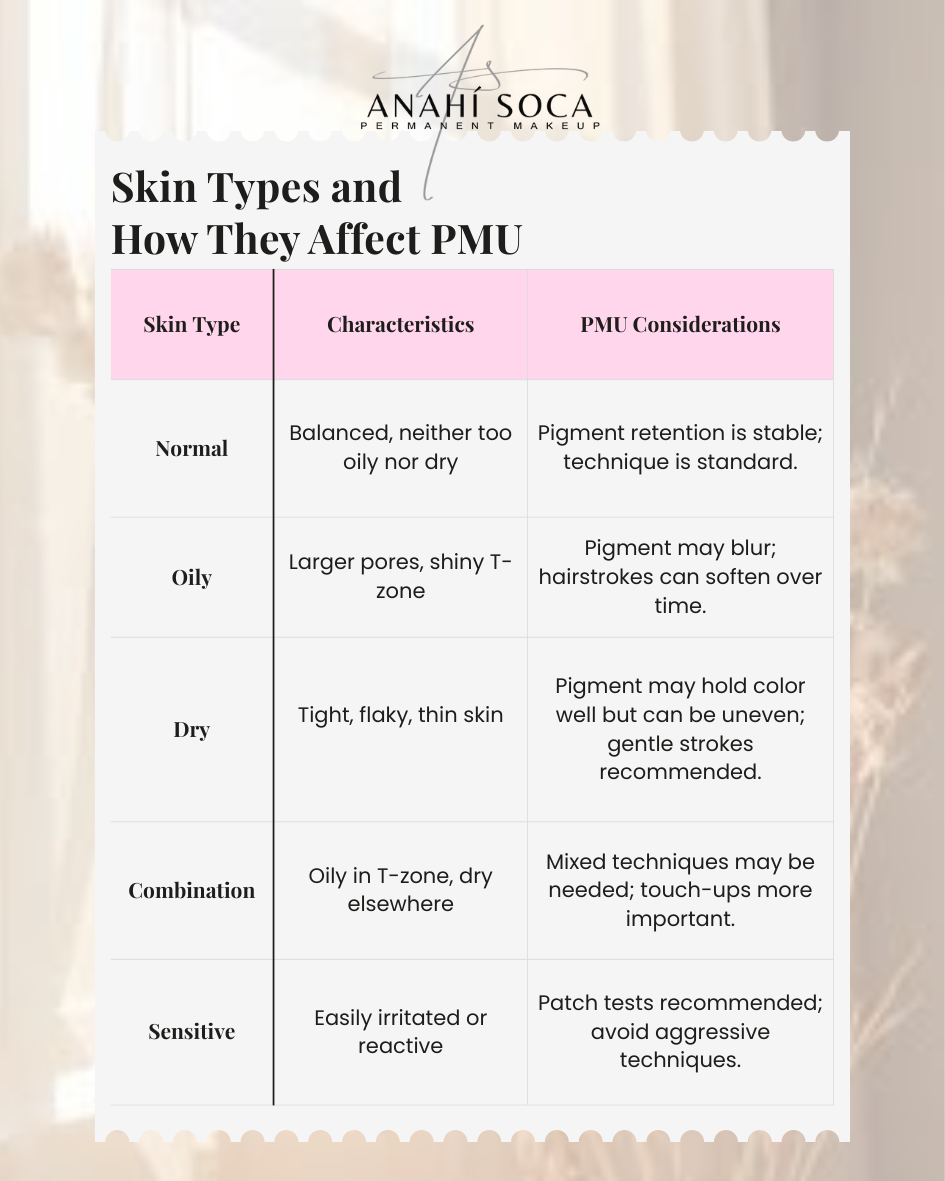Understanding Skin & PMU Pigment Placement in the Netherlands

How PMU Eyebrows Work: Skin Types & Pigment Placement in NL
Learn about skin layers, types, and where PMU pigment is applied. A complete guide for safe, natural permanent eyebrows in the Netherlands.
Introduction
Before getting PMU eyebrows, it helps to understand how your skin works. The skin is not just a surface; it has multiple layers, different types, and characteristics that affect how pigment settles and lasts. In the Netherlands, more clients are seeking educated insights to make informed decisions about permanent makeup.
The Three Main Layers of the Skin
- Epidermis (Outer Layer)
- The thin, protective top layer.
- Acts as a barrier against bacteria, UV, and pollution.
- PMU pigment does not stay here permanently; if applied too superficially, it fades quickly.
- Dermis (Middle Layer)
- Thicker, collagen-rich layer under the epidermis.
- This is the ideal location for PMU pigment.
- Placement here ensures pigment lasts 1–4 years depending on technique, skin type, and aftercare.
- Subcutaneous Fat Layer (Hypodermis)
- Deepest layer with fat and connective tissue.
Skin Types and How They Affect PMU

Tip: Mature or thin skin may also behave differently, requiring lighter strokes and careful pigment selection.
Where the Pigment Is Placed
- PMU artists implant pigment in the upper dermis, right beneath the epidermis.
- The needle depth is carefully controlled (0.2–0.4 mm for most brow techniques) to avoid scarring or pigment migration.
- Over time, the pigment naturally fades and softens, which is why touch-ups are necessary.
Why Skin Understanding Matters
- Longevity: Correct depth prevents premature fading.
- Color Accuracy: Pigment can appear darker or lighter depending on skin thickness and tone.
- Healing: Skin type affects swelling, scabbing, and final look.
- Technique Choice: Microblading, ombré, nano hairstrokes — all depend on how pigment interacts with skin.
Frequent Asked Questions
FAQs
Do all skin types heal the same way?
No, oily skin may cause pigment to spread slightly, dry skin may flake, and sensitive skin may require longer healing.
How can I know my skin type before PMU?
Consult your artist—they can examine your skin, discuss your concerns, and recommend the best technique.


0 Comments